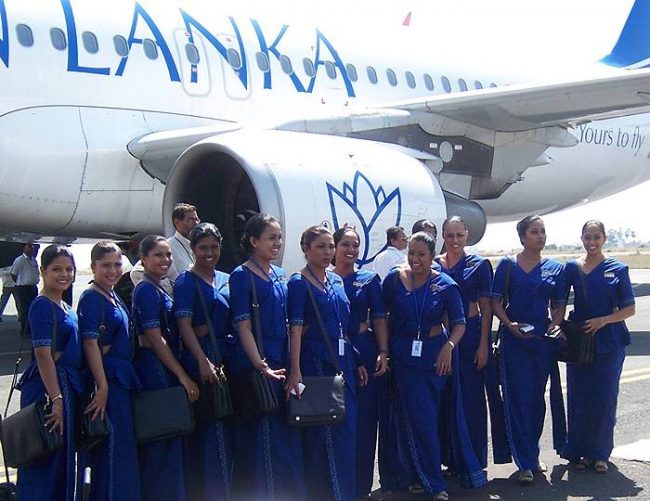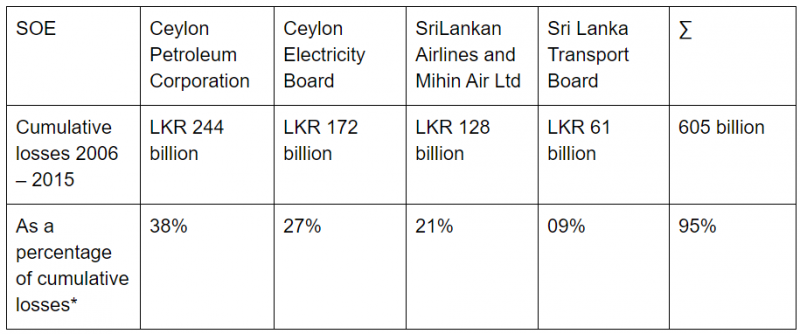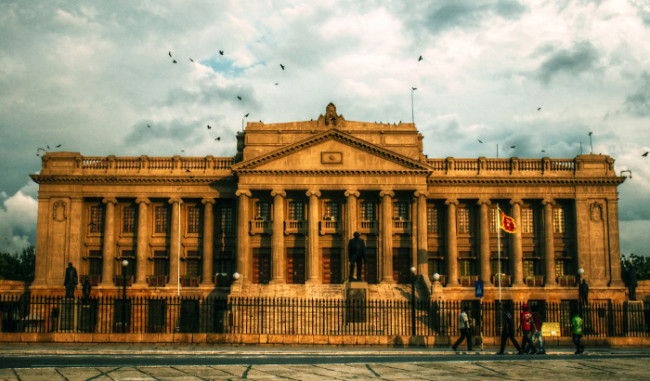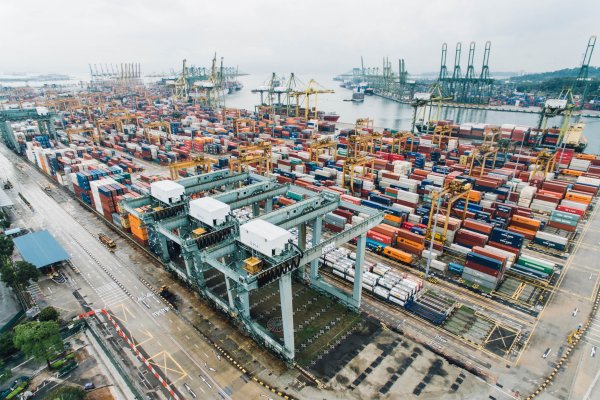
Privatisation of state-owned enterprises (SOEs) has always been a thorny issue in Sri Lanka, both politically and ideologically. It is no secret that an alarmingly high number of SOEs have made – and continue to make – massive losses year after year, leading to, among other things, a lack of funding that has in turn resulted in an erosion of quality and accessibility of services provided to the public.
Privatisation, or at the very least, public-private partnerships (PPP), has time and again been suggested as a solution to this problem but, barring a few exceptions, attempts by successive governments to reform the state sector through privatisation of SOEs have been… stillborn, at best, thanks largely to an (at times unfounded) fear among the voting public that such action could lead to a complete corporatocracy that puts profit above service.
That the masses have gotten used to a culture of handouts over the decades since Independence only adds to this misrepresentation. Even the present Government, led by the United National Party (UNP) which is widely regarded as being pro-business, has seemingly turned a deaf ear to the very idea, possibly fearing a political backlash spearheaded by their more left-leaning opponents.
Though some reforms were made from time to time, starting in 1977 with the opening of the economy, commercial corporations, government-owned companies, and statutory bodies continue to account for a significant share of the country’s economy. There is a total of 245 SOEs currently operating in Sri Lanka, of which only 22% have made their financial information available to the public.

Statistics show that 15% of working Sri Lankans are employed in the public sector. Image courtesy Mihin Lanka.
In this backdrop, it is worth taking a look at exactly how our SOEs have been performing over the years. The Advocata Institute, a recently established independent policy think tank, was kind enough to share with us its latest findings in this regard.
The Treasury has classified 55 out of the 245 SOEs as being “strategically important.” The last available performance report (2014), according to Advocata, indicates that these 55 SOEs obtained a budgetary support of LKR 126 billion and treasury guarantees of LKR 47.6 billion that year. Between 2006 and 2015, the loss-making entities amongst these 55 strategically important SOEs have made a cumulative loss of LKR 636 billion.
The cumulative profits made by the profitable of this lot (i.e. out of 55 SOEs) over the same period of time is LKR 530 billion (excluding the ETF).
Now, that may seem like it’s not that big a gap, but Advocata warns in its report that, while it is tempting to look at the net position, offsetting the losses against the profits, and conclude that the problem is small, doing so can only give rise to a false sense of security.
“Further, the full impact of SOEs on the Sri Lankan economy and the true cost to the taxpayer is not reflected in the published SOE accounts because of hidden subsidies,” the organisation says in its extensively detailed report.
Here is a breakdown of the current state of SOEs in Sri Lanka, as per Advocata’s findings:

Image credit: roar.lk
According to Advocata, there is a total of 8,552,359 Sri Lankans working in Sri Lanka, 15% of whom are employed in the public sector. Last year, that number was 1,278,696.
The number of SOEs grew rapidly from just 107 in 2009 to 245 in 2014. The corresponding number of employees of SOEs were 140,500 and 261,683 respectively.

Cumulative losses of 55 strategically important State owned enterprises (SOE) as per the Treasury
Here’s the kicker:
That net loss of 605 billion was 18% of Sri Lanka’s GDP in 2015. To put things in perspective, that’s a whopping 81% of the current budget deficit in Sri Lanka.
To break it down even further, according to statistics provided by Advocata:
The loss per year per employee in the public sector (only from those 55 strategically important SOEs) between 2006 and 2015 was LKR 49,654 million.
The cumulative losses of the 55 SOEs over that same period was LKR 636 billion. That’s a loss of LKR 31,750 per citizen. Those are some sobering figures, to say the least.
What Needs To Be Done?
A majority of state enterprises in Sri Lanka go back to the 1950s. Interventionist and protectionist economic policies adopted by successive governments since Independence have led to their less than stellar record in terms of performance and efficiency. SOEs are, by and large, a drain on the country’s resources, their appointments heavily politicised and, according to Sri Lankan born NUS based economist Professor Razeen Sally, crowd out private investment, thereby constraining customer choice.
SOEs have had success stories elsewhere, however. Critics often cite Singapore as a classic example of state enterprises done right. Singapore Airlines, in particular, is a shining example of a near-perfect state owned airline, having reported a marginal operating loss of just USD 38 million in a single year during the last ten years.
What many critics of privatisation fail to mention, however, is that Singapore is an exception and not the rule. Singapore and Malaysia each have a state-owned holding company for their SEOs – namely Temasek and Khazanah, respectively – that subjects all SOEs that come under its purview to all round competition, both domestically and internationally, and puts in place mechanisms to depoliticise them by separating ownership from management.
Since outright privatisation of Sri Lankan SOEs is not going to happen anytime soon, Professor Sally proposes the following (excerpts from an interview he gave Advocata’s inaugural publication):
- Identify enterprises that essentially operate in a commercial sphere, where there is some competition already, or where there could be more competition.
- If you have a state-run monopoly or oligopoly then don’t put it in such a holding company. Keep it separate ‒ because that’s probably going to be more politicised anyway (there may be other public policy objectives that will get involved in the running of that enterprise).
- Rather, put in this basket enterprises that are commercial. So that would include SriLankan Airlines, Mihin Air, and Sri Lanka Transport Board ‒. but not the Ceylon Electricity Board.
- In other words, don’t put all SOEs in this holding company, only put some of them that operate in a commercial sphere. These should be initially corporatised with majority state ownership.
- Then you should start introducing minority equity participation. Temasek is interesting because, in the key enterprises, the government still retains majority equity, therefore control. But they have actually gradually beefed up minority equity in most of the Temasek enterprises. That’s also a boost for the stock exchange or financial markets. And in some cases with non-priority enterprises, they have actually taken the private sector stakes to a majority of equity, and the government has retained only a minority of equity, or in some cases actually made an exit altogether.
- But in the meantime the government could be with minority equity up to 49%. Maybe when the time is right politically, move into majority private ownership. But the holding company should include airlines, buses, telcos and whatever is commercially viable and subject to competition.
What Do You Think?
Do you agree that privatisation is the way forward? Or are you vehemently opposed to the concept? Take our poll to share your thoughts.
[total-poll id=8435]
[total-poll id=8436]
[total-poll id=8437]
[total-poll id=8438]
[total-poll id=8439]
Featured Image courtesy ANCL








.jpg?w=600)